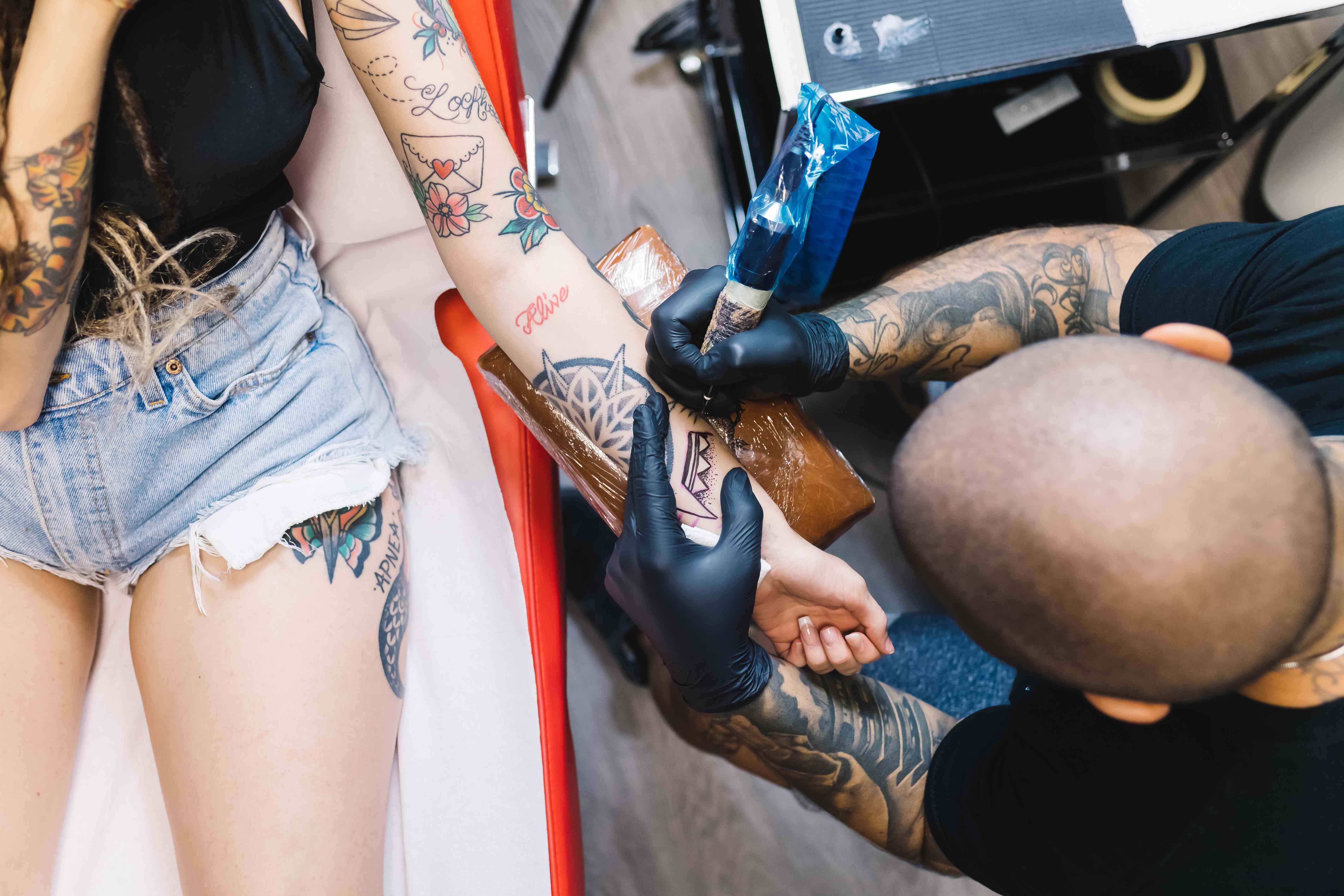A Study Found Bacteria Lurking in Tattoo and Permanent Makeup Inks—Here's Why That Matters Here's what you need to know, including how to protect yourself

A new study found bacteria in 35% of commercial tattoo and permanent makeup inks tested
- A new study found bacteria in 35% of commercial tattoo and permanent makeup inks tested.
- The researchers found the presence of both aerobic and anaerobic bacteria, which thrive in the deeper layers of skin.
- The study should be a wakeup call for stricter regulations regarding the safety of body inks, experts said.
Potentially dangerous bacteria could be lurking in your tattoo and permanent makeup (PMU) ink.
That’s the conclusion of recent research by the Food and Drug Administration, which found that 35% of commercial tattoo and permanent makeup inks scientists tested had bacterial contamination.
Both tattoos and permanent makeup—tattoos that mimic traditional cosmetics, such as eyeliner—are growing in popularity. They both involve a needle that inserts ink into the dermis (the skin’s middle layer).
The findings, published in July in Applied and Environmental Microbiology, showed that unopened and sealed inks can harbor both aerobic bacteria, which can live on the skin’s surface, as well as anaerobic bacteria, which thrive in those deeper layers.
“This suggests contaminated tattoo inks could be a source of infection from both types of bacteria,” Seong-Jae Kim, PhD, lead author and a research microbiologist staff fellow at FDA’s National Center for Toxicological Research, told Health.
The findings are “concerning” and underscore the potential health risks associated with these procedures, said Jody A. Levine, MD, a dermatologist and assistant clinical professor of dermatology at The Mount Sinai Medical Center.
“I have heard of quite a few patients who have developed infections or complications following tattoos or permanent makeup,” she told Health.

Eugenio Marongiu / Getty Images
Searching for Bacteria
Kim and his colleagues tested 75 tattoo and permanent makeup inks from 14 different undisclosed domestic and international manufacturers available on the U.S. market.
They found that 26 samples from 10 manufacturers had some degree of bacterial contamination, including some labeled as sterile. Most of the strains found were considered “possibly pathogenic,” meaning they could potentially cause disease.
Previous studies have found contaminants in tattoo ink before, but this is the first study that specifically tested body inks for anaerobic bacteria, which can grow in an oxygen-free environment.
Common bacteria found in study samples included Staphylococcus saprophyticus, a common cause of UTIs and, in rare cases, meningitis, and Cutibacterium acnes, which is linked to acne.
Glenicia Nosworthy, MD, an internal medicine and aesthetic physician, called the study a “wake-up call” to the industry that signals a need for increased awareness, regulation, and consumer education.
Although the study found slightly lower bacterial counts compared to prior research, which may point to improved manufacturing and sterilization practices resulting from FDA guidance issued in 2023, the contamination of tattoo and PMU inks remains an ongoing issue, Kim stressed.
“While improvements have been noted,” Kim said, “ongoing vigilance is needed to ensure the safety of tattoo and PMU inks, contributing to developing better standards and practices to protect public health.”
How to Reduce Your Risk of Infection and Other Post-Procedure Medical Issues
Experts said that getting an infection from tattoos or permanent makeup isn’t inevitable—there are steps you can take to avoid harm.
First off, “it’s crucial to do your research to find a reputable, licensed professional,” Levine said.
Along with checking reviews and credentials, Nosworthy suggested evaluating your tattoo artist or permanent makeup provider’s commitment to safety. Take time to inquire about their hygiene protocols, she advised.
Experts also suggested sharing any medical conditions with your tattoo artist so they can assess whether you should avoid the procedure. “For example, those with conditions like Lupus or those prone to keloids should avoid unnecessary injury to the skin,” Nosworthy said.
Many providers will offer a skin patch test to determine whether you’re allergic to the ink before the procedure begins—but if they don’t, ask for one.
You’ll also want to pay attention to post-procedure symptoms of infection such as redness, swelling, pain, heat, pus, and severe skin irritation or blistering, Nosworthy noted.
“Prompt recognition of these symptoms is crucial for seeking timely medical intervention and preventing complications,” she said.
This story originally appeared on: Health News - Author:Shanon Lee















